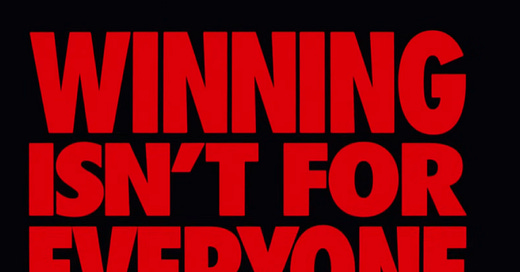Nike's Olympic Marketing: A Legacy of Unmatched Dominance...
Nike always has a way of dominating the Olympics and overshadowing all other sports brands especially the official sponsor Adidas...
Happy new week!
Adidas has been the official sportswear partner since 1972, and the Worldwide Olympics partner since 1992 but yet Nike always has a way of dominating the Olympics and overshadowing Adidas. We saw this with the London 2012 Olympics where more people (37%) recognised Nike as an Olympic sponsor compared to Adidas (24%) who was the Official Sponsor. We are seeing it again with the Paris Olympics.
With Nike now operating in an increasingly crowded market with brands like On Running, Hoka, and Lululemon taking their market share. In June, Nike announced its worst sales results in more than two decades excluding the first year of the pandemic and the 2008-09 financial crisis. The Olympics created a much needed platform for Nike to demonstrate “the power of Nike.” says Heidi O’Neill, Nike’s president of consumer, product and brand.
The International Olympic Committee (IOC) along with Adidas enforce strict regulations regarding sponsorship around the Olympics. In 2012 Adidas won the title Sponsor bid for $150 million and during the London Olympic Games exclusive rights were granted only to official sponsors for the use of Olympic symbols and keyword phrases such as “Olympic Games,” “London 2012,” “Summer Olympics. Forbidding non sponsors from creating any association that implies an official connection with the Olympics.
Nike, without the official title sponsorship, found a creative work around and emerged as the undisputed champion with their campaigns. Since Nike was prohibited from displaying London of the United Kingdom in any of commercial they advertised, they used 28 other places in the world with name London like London in Ohio, Little London in Jamaica, The London Hotel, Small London in Nigeria, and many more where Nike Shot their commercial and could legally show the word London.
The International Olympic Committee has loosened its rules this cycle via a Rule 40 pilot programme Nike is participating in. This means brands that aren’t official Olympic sponsors can have a bigger presence during the games, including reacting immediately on social media. Previously, non-sponsor brands were not allowed to post wins on social media and could never use the Olympic IP or athlete imagery during the games. The goal is to broaden the Olympic brand reach to younger consumers and increase traffic, as well as to increase athlete advertising opportunities.
Nike is taking advantage of this and is making a lot of noise this Olympics to ensure their presence is felt in and out of the arena. With Nike showcasing its world class athletes for its “Winning isn’t for everyone” summer campaign. In the campaign, various Nike athletes including LeBron James, Serena Williams, Giannis Antetokounmpo, Qinwen Zheng, A'ja Wilson, Vini Jr., Jakob Ingebritsen, and Sha'Carri Richardson explained what winning meant to them. The global campaign has caught the eyes of many with its athlete extension films, campaign photography, social media, and out-of-home advertising in cities worldwide.
The Nike Olympics campaign has definitely won gold, but for Nike to win back its market share it can’t solely rely on the Olympics, it’ll need to go back to being the innovative and youthful brand that constantly brings out the best in market products complemented with its strong marketing and activations.


